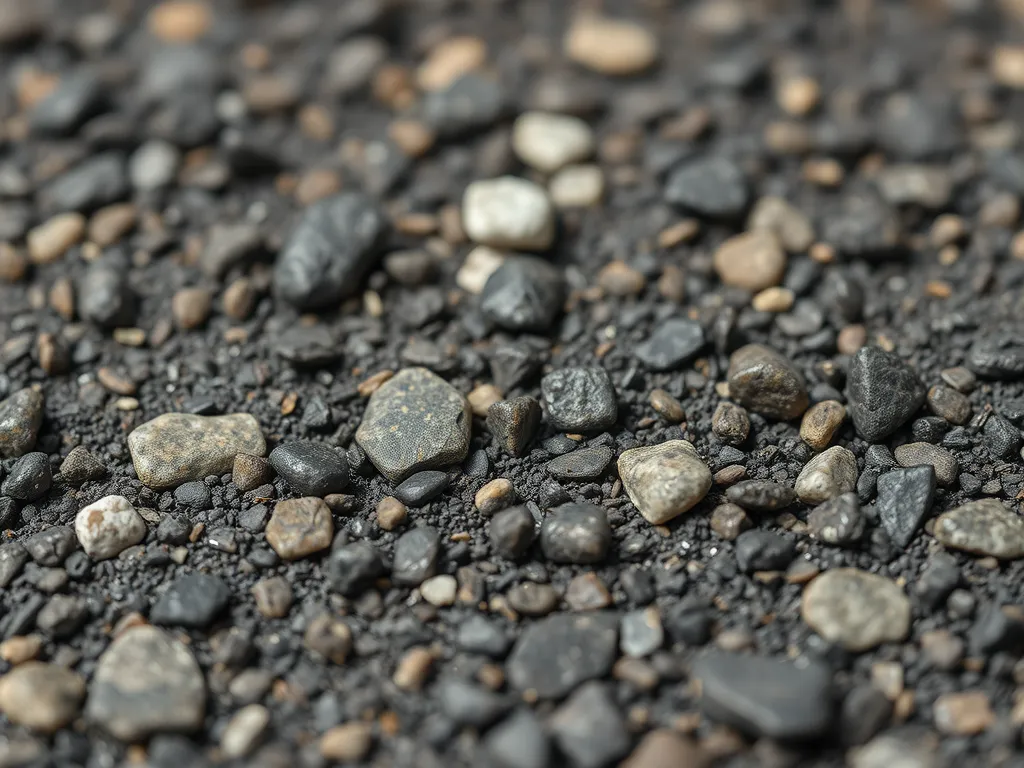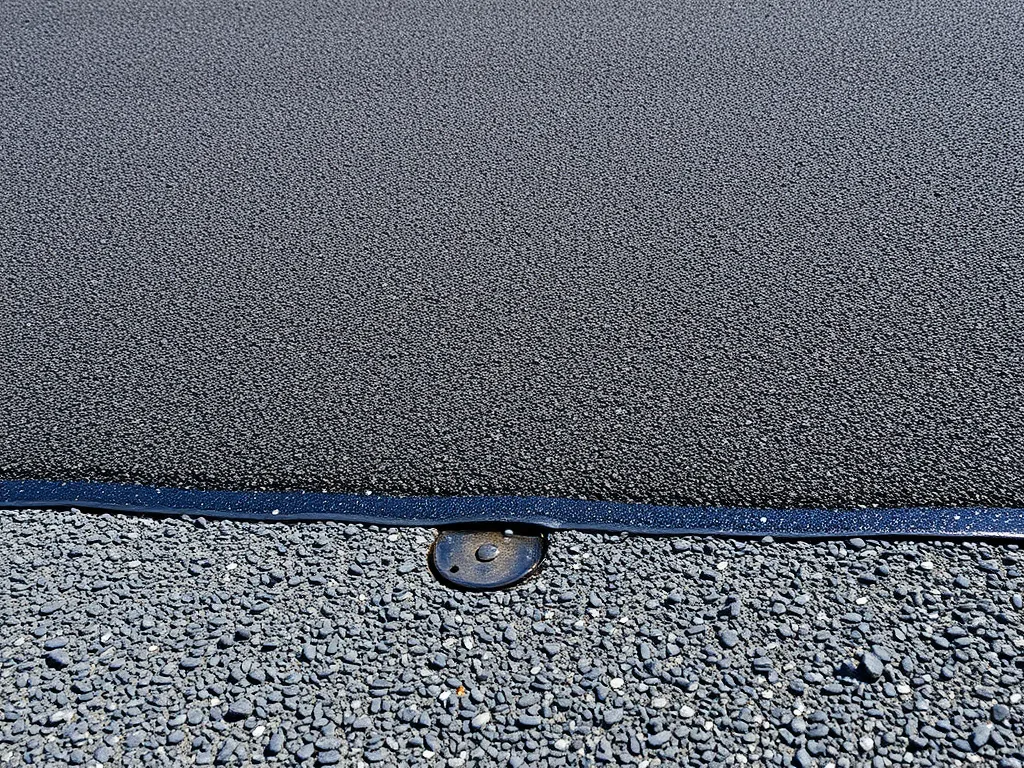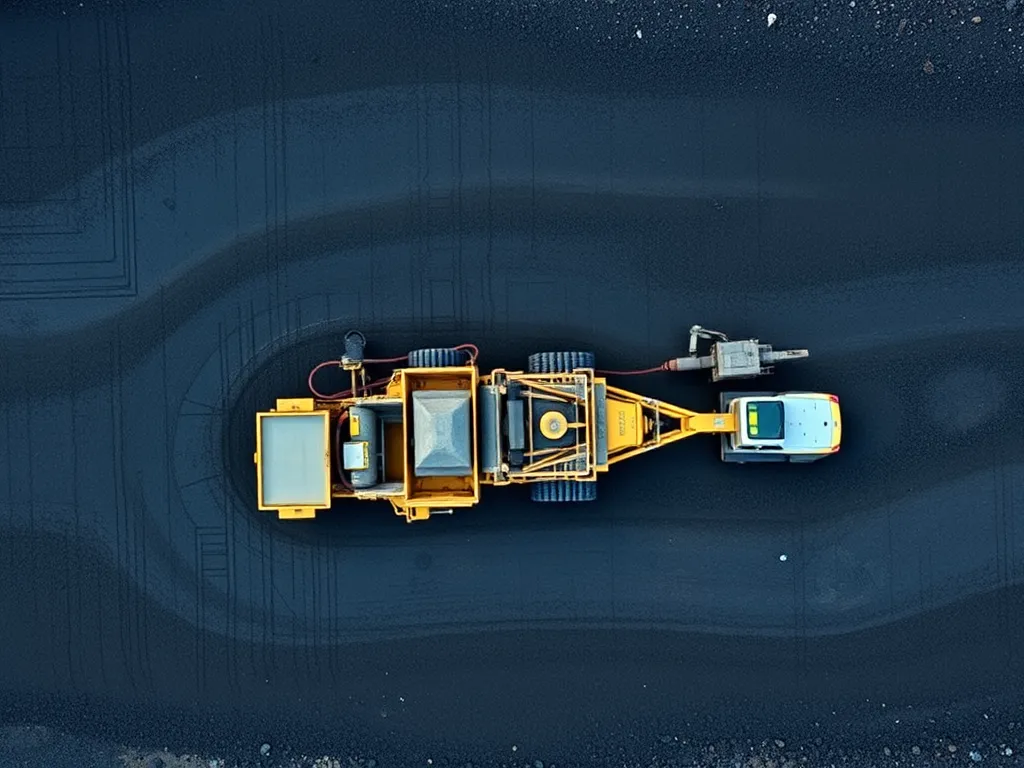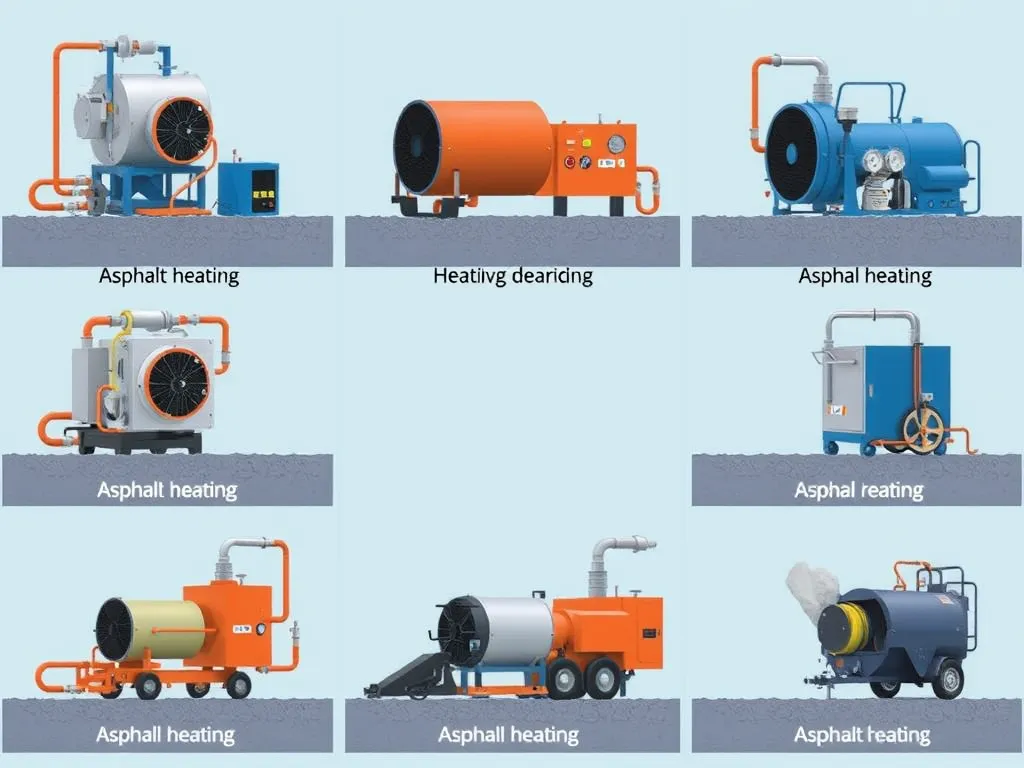What Determines How Long Your Asphalt Lasts?
Published on: April 21, 2025 | Last Updated: April 14, 2025
Written By: George Voss
Asphalt performance depends on material quality, climate conditions, traffic loads, construction methods, and maintenance practices. These elements determine how quickly surfaces crack, rut, or degrade. Durable roads require high-grade aggregates, precise binder formulas, and proper drainage to handle temperature swings and heavy vehicles. Without addressing these factors, pavements may fail in 5-10 years instead of reaching their 20-year potential.
This article breaks down the eight key factors impacting asphalt lifespan. Learn how mix designs like Hot Mix Asphalt (HMA) and Performance Grade (PG) binders adapt to regional climates. PG binders—engineered for specific temperature ranges—prevent rutting in desert heat or cracking in Arctic cold. Explore why subgrade preparation and drainage systems prevent potholes. See maintenance techniques like crack sealing and seal coating that add 5-10 years to pavement life. We’ll cover costs, technical specs (like 95% compaction standards), and solutions for common failures.
Contents
- Introduction to Asphalt Performance and Durability
- Material Composition and Asphalt Mix Design
- Asphalt Binder Properties
- Temperature and Climate Influence
- Traffic Load and Stress Factors
- Construction Techniques and Quality Control
- Subgrade Quality and Drainage
- Maintenance Practices for Longevity
- Environmental Impact on Asphalt Aging
- FAQs on Asphalt Performance
- Closing Thoughts
- Additional Resources for You:
Introduction to Asphalt Performance and Durability
Asphalt performance links to how long pavements stay smooth and crack-free. Durability depends on five key parts: mix design, binder traits, climate, traffic, and build quality. Weakness in any area speeds wear, cuts life span, or raises repair costs.
Material choice forms the base. Strong rocks and sand resist crushing. Binder viscosity affects heat and cold response. Mix design blends these parts for target strength. Hot mix suits heavy traffic zones. Cold mix works for quick fixes. Adding recycled asphalt (RAP) cuts waste but needs careful testing.
Climate hits hard. Heat softens binder, causing rutting under tires. Cold makes asphalt shrink, leading to cracks. Rain seeps into tiny gaps, breaking bonds. Freeze-thaw cycles worsen gaps over time. Traffic weight bends pavements, causing fatigue cracks if layers lack strength.
Build methods matter. Poor compaction leaves air pockets. Thin layers crack faster. Bad subgrade prep leads to sinking. Drainage flaws let water weaken the base. Each flaw adds stress, cutting pavement life by years.
These factors set the stage. Next, we detail how mix design choices shape asphalt’s first line of defense.
Material Composition and Asphalt Mix Design
Asphalt performance starts with the raw materials. Aggregates, binder, and mix design form the backbone of durable pavement. Each element must meet strict standards to handle traffic loads, weather shifts, and time.
Aggregate Quality and Gradation
Aggregates like limestone, granite, or gravel make up 90-95% of asphalt by weight. Angular shapes lock tighter than rounded stones, boosting stability. Proper gradation—particle size distribution—ensures fewer voids. Gaps between large stones get filled with smaller ones, creating a dense mat. Poor gradation leads to rutting at 120°F or cracks in freezing temps.
Asphalt Binder Type and Viscosity
The binder (bitumen) glues aggregates together. Performance Grade (PG) ratings like PG 64-22 define viscosity ranges. High-viscosity binders resist softening in heat but may crack in cold. Warm-mix additives lower production temps by 50°F, cutting fuel use without sacrificing durability. Wrong binder choice causes premature aging, stripping, or deformation.
Role Of Asphalt Mix Design in Stability
Mix design balances aggregates, binder, and air voids. Superpave methods tailor blends to local climate and traffic. Target air void content hovers near 4%—too low causes bleeding; too high invites water damage. Stability tests like the Marshall method check load resistance above 3,000 lbs.
Hot Mix vs. Cold Mix Asphalt
Hot mix asphalt (HMA) cooks at 300°F, creating a dense surface for highways. Cold mix uses emulsified binders for patch jobs below 40°F. While HMA lasts 15+ years, cold mix serves as a temporary fix with 2-5 year lifespans. Choose based on traffic volume and repair urgency.
Impact of Reclaimed Asphalt Pavement (RAP)
Adding 20-30% RAP cuts material costs by 15% and slashes landfill waste. Aged binder in RAP needs rejuvenators to restore viscosity. Over 30% RAP risks brittleness unless fresh binder compensates. Proper testing ensures recycled mixes meet PG specs without losing crack resistance.
While mix design forms the foundation, the binder’s properties dictate how pavement reacts to heat, cold, and heavy trucks. Next, we’ll break down how binder aging and modifiers shape long-term performance.

Asphalt Binder Properties
The performance of any asphalt pavement depends on its binder’s ability to withstand stress. This sticky black substance binds aggregates together while resisting cracking, deformation, and moisture damage. Let’s break down how its properties shape pavement durability.
Binder Aging and Oxidation Effects
Oxidation occurs when oxygen reacts with binder molecules, making them brittle over time. PG (Performance Grade) binders graded by climate tolerance lose flexibility as carbonyl compounds form. Aged binders show 20-40% higher stiffness in Dynamic Shear Rheometer tests, increasing risks of top-down cracking. UV exposure speeds this process, leading to surface raveling within 5-7 years without maintenance.
Temperature Sensitivity and Viscosity Changes
Binder viscosity shifts with temperature swings. At 140°F, some binders soften to 1,000 Poise, causing rutting under heavy trucks. Below 40°F, viscosity spikes to 1 million Poise, making pavements prone to thermal cracking. Superpave specifications use Performance Grading (PG 64-22, PG 76-16) to match binder stiffness to regional climates. For instance, PG 76-16 remains stable up to 76°C (169°F), ideal for desert highways.
Use Of Modifiers for Enhanced Resistance
Polymer-modified binders boost performance in extreme conditions. Common additives include:
- Styrene-Butadiene-Styrene (SBS): Improves elasticity
- Crumb rubber: Reduces noise by 3-5 decibels
- Polyphosphoric acid (PPA): Lowers production costs by $8-$12 per ton
Improving Shear and Fatigue Resistance
SBS-modified binders increase shear resistance by 300%, critical for intersections with frequent braking. Fatigue life jumps from 10,000 to 100,000 load cycles in Four-Point Bending tests. Modified binders also cut rut depths by 50% in high-traffic zones, per Federal Highway Administration studies.
Adhesion and Cohesion Enhancements
Anti-stripping agents like hydrated lime (1-2% by weight) prevent water from separating binders from aggregates. Lime-treated mixes show 85% retained tensile strength vs. 60% in untreated mixes after freeze-thaw cycles. Cohesion modifiers such as gilsonite increase binder stiffness by 25%, reducing shoving in truck climbing lanes.
While binder properties form the backbone of pavement strength, their interaction with environmental forces determines long-term success. Next, we’ll explore how temperature swings and moisture shape performance.
Also See: Asphalt Density and Its Importance
Temperature and Climate Influence
Weather extremes challenge asphalt pavement more than any other factor. From scorching summers to freezing winters, temperature shifts alter binder viscosity, aggregate bonds, and pavement structure. Engineers combat these effects through advanced mix designs and climate-specific materials.
High-temperature Deformation and Rutting
When asphalt pavement exceeds 140°F, binder viscosity drops, weakening its grip on aggregates. Heavy traffic then pushes softened asphalt sideways, creating ruts up to 1.5 inches deep. PG (Performance Graded) binders like PG 64-22 resist this by maintaining shear strength at peak temperatures. Rutting risk rises by 40% in regions with sustained 90°F+ weather, demanding stiffer mixes with angular crushed stone.
Low-temperature Cracking and Thermal Stress
Below 20°F, asphalt binder becomes rigid, losing flexibility. Thermal contraction creates tensile stresses exceeding 300 psi, fracturing pavement in straight-line cracks. Polymer-modified binders like PMA 76-34 lower the critical cracking temperature from -22°F to -34°F. Adding 15% recycled tire rubber boosts crack resistance by 60% in northern climates.
Thermal Cycling and Asphalt Stability
Daily temperature swings cause expansion and contraction, fatiguing the binder-aggregate matrix. After 1,000 cycles between 32°F and 104°F, unmodified asphalt loses 35% of its tensile strength. Stone Matrix Asphalt (SMA) mixes combat this with 6-7% binder content and cellulose fibers, reducing air voids to 3-4% for better cohesion.
Climate demands shape every asphalt decision—from binder grade selection to aggregate size. Next, traffic loads determine how these temperature-induced stresses accelerate pavement wear.

Traffic Load and Stress Factors
Vehicle traffic shapes asphalt pavement behavior. Load magnitude, frequency, and distribution directly affect cracking patterns, deformation rates, and structural lifespan. Let’s break down how forces from wheels translate into pavement stress.
Impact Of Heavy Loads on Pavement Deformation
Axle weights exceeding 18,000 lbs accelerate rutting. Heavy trucks apply vertical forces that push asphalt mix sideways, creating grooves. Rut depths above 0.5 inches compromise drainage and vehicle control. The 2020 FHWA study found overloaded trucks (20% above legal limits) reduce asphalt durability by 10-15% annually. High asphalt binder viscosity at installation helps resist shear failure under extreme loads.
Repeated Loading and Fatigue Cracking
Daily traffic cycles cause micro-cracks to form beneath the surface. A highway with 10,000 trucks/day faces 3.65 million load applications yearly. Asphalt fatigue starts when repeated bending exceeds the mix’s tensile strength. Polymer-modified binders extend fatigue life by 30-40%, delaying interconnected cracking. Without reinforcement, alligator cracks emerge within 5-7 years on high-traffic roads.
Load Distribution and Subgrade Interaction
Asphalt layers spread wheel loads across the subgrade. A 6-inch base course reduces subgrade stress by 70% compared to thin pavements. Weak subgrades (California Bearing Ratio below 5) trigger premature potholes. Geotextile stabilization boosts load-bearing capacity, cutting deformation risks by half. Proper compaction during asphalt installation ensures uniform force transfer between layers.
Up next: How placement methods and quality checks during construction lock in asphalt performance gains.
Construction Techniques and Quality Control
Proper installation methods determine how asphalt pavement handles traffic, weather, and time. Even with premium materials, poor execution accelerates cracking, deformation, and drainage failures.
Compaction and Density Requirements
Density directly impacts asphalt durability. Achieving 92-96% of maximum theoretical density (Gmm) using vibratory rollers prevents air voids above 8%, which cause moisture damage. Under-compacted pavement loses 20% of its lifespan for every 1% drop below target density. Over-compaction fractures aggregates, weakening structural integrity.
Mix Temperature and Rolling Time
Hot mix asphalt must stay between 280°F and 330°F during laydown. If temperatures drop below 250°F before rolling, compaction falters, creating voids. Rollers have a 15–30-minute window to achieve mat density. Infrared thermography identifies cold spots needing immediate attention to avoid weak zones prone to shear failure.
Layer Thickness and Mat Placement
Layers thicker than 3 inches trap heat unevenly, causing thermal cracks. Thin layers under 1.5 inches lack load-bearing depth, rutting under heavy trucks. Paver screeds set precise mat thickness, while automatic grade controls maintain slope for water runoff. Segregation—when coarse aggregates separate from fines—creates bumpy surfaces vulnerable to raveling.
Solving Construction Defects
Common issues like tender zones (soft areas) or bleeding (excess binder) stem from erratic mix temperatures or roller patterns. Remedies include adjusting plant discharge heat by 10–15°F or using infrared patching for localized repairs. Nuclear density gauges or intelligent compaction systems map problem areas in real time.
Ensuring Proper Adhesion Between Layers
Tack coats—emulsified asphalt applied at 0.05–0.15 gallons per square yard—bind fresh lifts to existing ones. Skipping this step reduces interlayer bond strength by 70%, triggering delamination under traffic. Test adhesion using ASTM D7114 pull-off methods, aiming for 50 psi minimum tensile strength.
While precise construction keeps pavements intact, their longevity also depends on what lies beneath. Subgrade strength and drainage systems form the hidden backbone of asphalt performance.

Subgrade Quality and Drainage
The strength of asphalt pavement starts below the surface. Subgrade soil and drainage systems form the base that holds roads firm under traffic. Weak soil or poor water flow leads to cracks, dips, and early wear.
Soil Type and Stabilization Methods
Clay soils swell when wet and shrink when dry, causing uneven support. Sandy soils drain well but shift under heavy loads. Stabilization fixes weak soils. Lime or cement binds clay particles. Geogrids reinforce loose sand. Proper treatment boosts CBR (California Bearing Ratio) by 50-300%, ensuring a solid base for asphalt layers.
| Soil Type | Stabilization Method | CBR Gain |
|---|---|---|
| Clay | Lime treatment | 200% |
| Sand | Polymer grids | 150% |
| Silt | Cement mixing | 180% |
Drainage Efficiency and Moisture Damage
Water trapped under asphalt softens the base, causing potholes and cracks. Drainage pipes move water away from the roadbed. Permeable asphalt edges let runoff escape. A 1% slope in ditches cuts moisture damage by 40%. Without drainage, wet subgrades lose 70% of their load strength.
Subgrade Preparation for Load-bearing Capacity
Compaction is key. Rollers press soil to 95% Proctor density, creating a stiff plate. Proof rolling spots weak zones—areas that sink over ½ inch need more work. Adding 6-12 inches of crushed stone spreads truck weight evenly. Proper prep cuts rut depth by 30% under 18-wheeler traffic.
Up next: how routine fixes like crack seals and seal coats fight wear from sun, salt, and tires.
Maintenance Practices for Longevity
Proper care keeps asphalt strong through harsh weather, heavy loads, and daily wear. These steps fix small issues before they grow into costly repairs.
Crack Sealing to Prevent Water Infiltration
Water is asphalt’s top enemy. Cracks let rain seep into the base layers, weakening the pavement. Use rubberized sealants to fill gaps wider than 1/4 inch. Apply them at 50-85°F for best bond strength. Crack sealing cuts water damage by 75% and slows alligator cracking.
Pothole Repair and Surface Treatments
Potholes form when loose chunks break off under traffic. Fix small holes (under 2 inches deep) with cold patch mixes. For deeper voids, use full-depth repair—dig out bad layers, compact fresh hot mix. Surface treatments like chip seals add grip and fill tiny cracks. Costs range from $2-$5 per square foot.
Seal Coating for Oxidation Resistance
Sunlight breaks down the asphalt binder over time. Seal coats add a dark layer that blocks UV rays. Apply coal tar or asphalt-based emulsion every 3-5 years. Proper curing takes 24-48 hours. This step slows raveling—the loss of small stones from the surface.
While upkeep extends pavement life, climate threats like ice and heat still take a toll. Next, we explore how weather speeds up aging and what shields your asphalt.

Environmental Impact on Asphalt Aging
Natural forces constantly work against asphalt pavement. Sun, rain, and shifting conditions break down binders and aggregates over time. This process impacts structural integrity and ride quality.
UV Radiation and Surface Raveling
Sunlight triggers oxidation in asphalt binders. UV rays dry out bitumen, making it brittle. This weakens adhesion between aggregates, causing surface raveling—loose stones and rough textures. PG (Performance Graded) binders with UV stabilizers slow this damage. For example, PG 76-22 binders withstand high solar radiation in southern states better than standard grades.
Moisture Penetration and Stripping
Water seeps into tiny cracks or poorly compacted layers. It displaces binders from aggregates through a process called stripping. This reduces mix cohesion by up to 40%, leading to potholes and base failures. Using anti-stripping additives like hydrated lime or liquid amines boosts moisture resistance. Properly designed pavements maintain 3-5% air voids to allow drainage without compromising density.
Freeze-thaw Cycles and Structural Damage
In cold climates, water inside asphalt expands by 9% when frozen. This pressure cracks surfaces and lifts layers (frost heave). Repeated cycles widen cracks, letting more water in—a destructive loop. Polymer-modified binders like SBS (styrene-butadiene-styrene) improve flexibility, handling up to 300 freeze-thaw cycles before failing. Subsurface drainage systems meeting AASHTO M 245 standards cut risk by redirecting water away from pavement bases.
Managing natural impacts requires smart material choices and proactive asphalt maintenance. Up next: common questions on boosting pavement life amid harsh conditions.
FAQs on Asphalt Performance
What Are the Benefits Of Using High-quality Aggregates in Asphalt?
High-quality aggregates enhance the strength and durability of asphalt. They provide better resistance to cracking, rutting, and general wear, which ultimately extends the lifespan of the pavement. Additionally, well-graded aggregates improve workability and compactability, ensuring a smoother surface finish.
How Does the Climate Affect Asphalt Performance Over Its Lifespan?
Climate plays a critical role in asphalt performance; extreme temperatures can lead to rutting in hot weather and cracking in cold conditions. Moisture infiltration can also cause degradation. Understanding local climate patterns is essential for selecting appropriate materials and mix designs for optimal performance.
What Role Does Traffic Volume Play in Asphalt Wear and Maintenance Needs?
Traffic volume directly influences the rate of wear on asphalt pavements. Higher traffic levels, especially from heavy vehicles, lead to quicker deterioration and necessitate more frequent maintenance activities. Accelerated wear can manifest as cracking, rutting, and surface raveling, making regular assessment and upkeep critical.
How Often Should Asphalt Pavements Be Inspected and Maintained?
Asphalt pavements should ideally be inspected at least once a year, with a more thorough evaluation every three years or after severe weather events. Regular inspections help identify early signs of damage, allowing for timely repairs that can prevent costly overhauls.
What Maintenance Practices Can Significantly Increase the Lifespan Of Asphalt Pavements?
Regular maintenance practices like crack sealing, pothole repairs, and seal coating are vital for extending asphalt lifespan. These proactive measures prevent water infiltration, surface degradation, and structural damage, ultimately reducing the need for extensive repairs or replacements.
Closing Thoughts
Asphalt performance is a multi-faceted subject influenced by several critical factors. Material composition plays a vital role, where the quality of aggregates and the type of binder directly impact durability and resilience. Proper design of asphalt mixes, including the use of reclaimed asphalt pavement (RAP), can significantly enhance the lifespan of a roadway.
Environmental factors such as temperature and climate further shape how asphalt responds to loads and stresses. Heavy traffic loads and poor construction practices can lead to rapid degradation, emphasizing the need for meticulous quality control during installation.
Finally, regular maintenance is crucial. Routine practices like crack sealing and seal coating protect against moisture infiltration and UV damage, extending the functional life of asphalt surfaces.
For more detailed insights and tools related to asphalt performance, check out Asphalt Calculator USA.
Additional Resources for You:
- The Asphalt Institute. (2007). MS-4: The Asphalt Handbook. Lexington, KY: Asphalt Institute.
- Factors affecting asphalt compaction – Asphalt magazine
- Analysis of factors that influence anti-rutting performance of asphalt pavement – ScienceDirect


